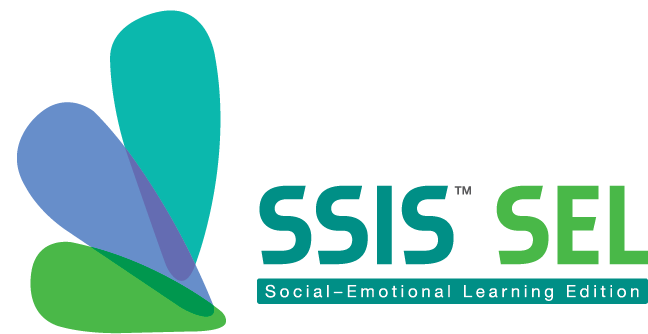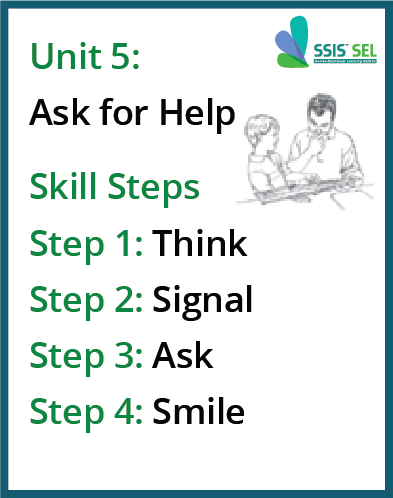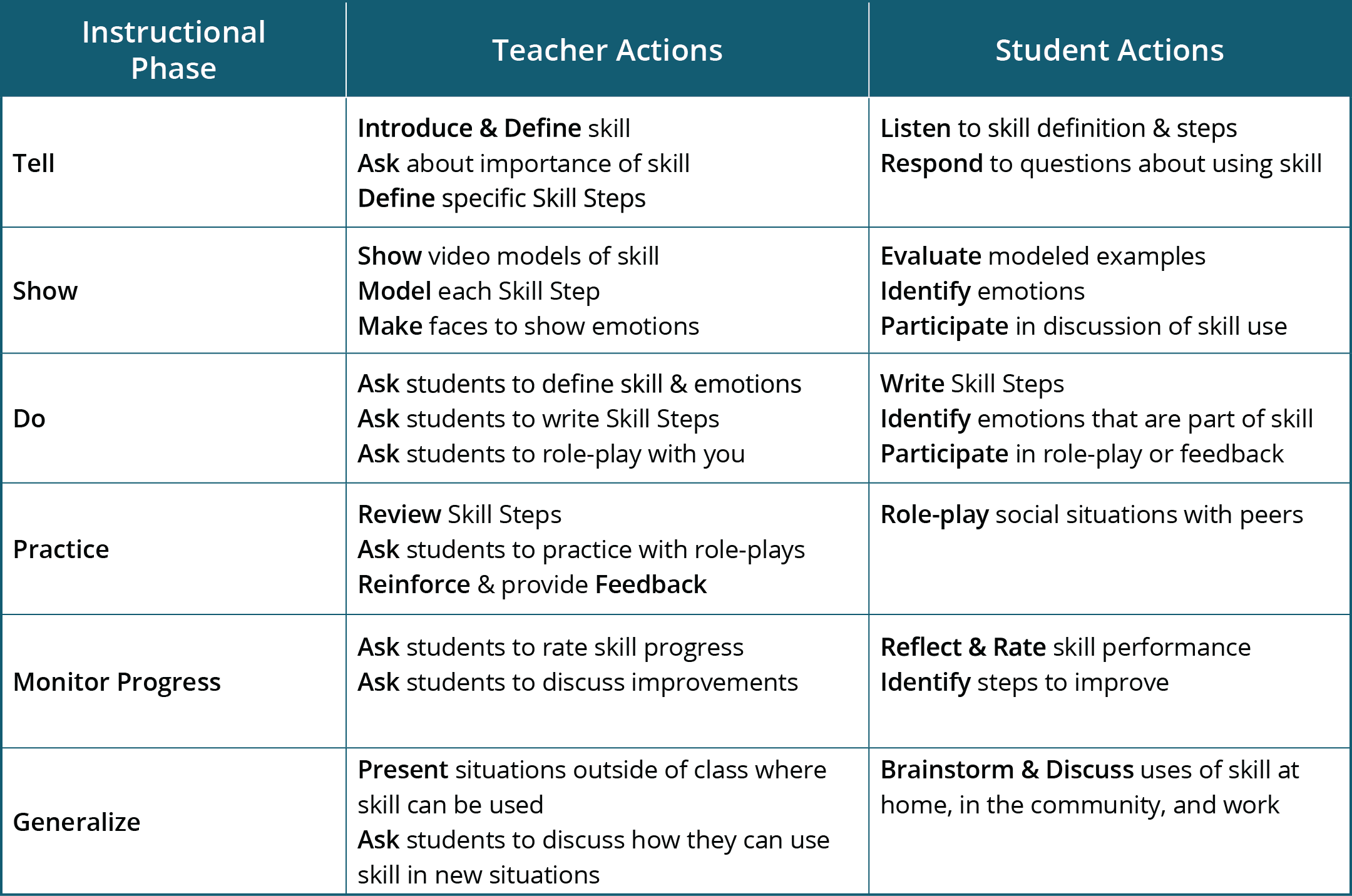Brief #4 – Teaching Children to Ask for Help
Intervention Simplified
Teaching children to ask for help
A self–awareness skill
Stephen N. Elliott, PhD

The skill of asking for help seems simple, yet for many children using this skill appropriately can be challenging. Some children ask for help before they really try to do something or solve a problem themselves, while others struggle without asking for any help and then often give up rather than be embarrassed by admitting they needed help. The skill of asking for help is expected and valued in all students given that school involves interacting and working with many other children and adults in a variety of social situations. In numerous national surveys of parents and teachers, asking for help has been identified as a key social−emotional skill necessary for success at home and school (e.g., Gresham & Elliott, 2008; Lane, Pierson, & Givner, 2003; Lane, Stanton-Chapman, Jamison, & Phillips, 2007).
Learning to ask for help from an adult or peer starts with an awareness that one needs some help. This self-awareness often involves feeling a little nervous or anxious about completing a task or problem and perhaps afraid to ask somebody for help. A constructive response to this feeling involves identifying somebody who can help, getting that person’s attention appropriately, requesting his or her help in a positive way, and showing appreciation for any help provided. This sequence of steps can be taught along with other key social−emotional skills. In this intervention brief, we describe how to teach an entire classroom of students to ask for help using the intervention resources of the SSIS™ SEL Edition Classwide Intervention Program (CIP; Elliott & Gresham, 2017).

Asking for help is considered a self-awareness skill within the Collaborative for Academic, Social, and Emotional Learning competency framework (CASEL, 2012). Other key self-awareness skills include telling others about your skills and being positive about the future. Asking for help, however, is a foundational skill and can be taught to all children effectively.
Overview of the SSIS SEL Edition CIP
The SSIS SEL Edition CIP provides teachers and other interventionists with a SAFER—Sequenced, Active, Focused, Explicit, Responsive— way to teach children ages 4 to 14 years up to 23 skills that represent the social−emotional learning (SEL) competencies of self-awareness, self-management, social awareness, relationship skills, and responsible decision making. To successfully employ self-awareness skills, students first need to understand their emotions and their skill strengths and weaknesses and then communicate effectively with others. To teach social−emotional skills such as asking for help, the SSIS SEL Edition CIP uses a six-step process: Tell, Show, Do, Practice, Monitor Progress, and Generalize. This process has been shown to be engaging and has been implemented with high integrity by teachers in hundreds of classrooms. DiPerna and colleagues (2015, 2016, 2017), in a randomized control trial in six elementary schools funded by the U.S. Department of Education, provided strong evidence to support the SSIS SEL Edition CIP’s six-phase program. Specifically, these researchers reported that using the six-phase process resulted in students (1) learning social−emotional skills and performing these desired behaviors more frequently, (2) concurrently reducing the frequency of many common externalizing problem behaviors, and (3) increasing academic engagement and in some cases achievement test scores. This research documenting the triple positive impact of the SSIS SEL Edition CIP resulted in CASEL designating it “a SELect program for elementary students” (https://casel.org/ guideprogramssocial-skills).
Teaching a self–awareness skill: Ask for help
In the SSIS SEL Edition CIP, asking for help from an adult or peer is defined as getting a person’s attention and making a request for help or assistance in a nice way. The steps for this skill are outlined in the Unit 5 Skill Steps Cue Card and are described as follows: Step 1: Think about what you need help with. Step 2: Signal to get the attention of someone who can help you. Step 3: Ask a question about the help you need in a nice way. Step 4: Smile and thank the person for helping you. Using the six-phase instructional process, the key actions and activities for both the teacher and a classroom of students are listed in the table below. At the center of this process is a series of role-play situations that students practice and then receive feedback on each Skill Step in a supportive classroom environment. After practicing a skill, students monitor their progress using a simple four-level scale and are expected to identify which step(s) need improvement.


By following this instructional process, most teachers can teach a skill lesson in 25 to 30 minutes three times a week. With the additions of other SSIS SEL Edition CIP resource materials—PowerPoint™ lesson presentations, video clips, Emotions Cue Cards, Student Engagement Records—all students will be engaged and the intervention is simplified for teachers!
References
Collaborative for Academic, Social, and Emotional Learning. (2012). Effective social and emotional learning programs. Retrieved from https://casel.org/wp-content/uploads/2016/01/2013-casel-guide-1.pdf
DiPerna, J. C., Lei, P., Bellinger, J., & Cheng, W. (2015). Efficacy of the Social Skills Improvement System Classwide Intervention Program (SSIS-CIP) primary version. School Psychology Quarterly, 30(1), 123–141. doi:10.1037/spq0000079
DiPerna, J. C., Lei, P., Bellinger, J., & Cheng, W. (2016). Effects of a universal positive classroom behavior program on student learning Psychology in the Schools, 53(2), 189–203. doi:10.1002/pits.21891
DiPerna, J. C., Lei, P., Cheng, W., Hart, S. C., & Bellinger, J. (2017). A cluster randomized trial of the Social Skills Improvement System-Classwide Intervention Program (SSIS-CIP) in first grade. Journal of Educational Psychology, 110(1), 1–16. doi:10.1037/edu0000191
Elliott, S. N., & Gresham, F.M. (2017). SSIS SEL Edition Classwide Intervention Program manual. Bloomington, MN: NCS Pearson.
Gresham, F.M., & Elliott, S.N. (2008). Social Skills Improvement System technical manual. Bloomington, MN: Pearson Assessments.
Lane, K. L., Pierson, M. R., & Givner, C. C. (2003). Teacher expectations of student behavior: Which skills do elementary and secondary teachers deem necessary for success in the classroom? Education and Treatment of Children, 26(4), 413–430.
Lane, K. L., Stanton-Chapman, T., Jamison, K. R., & Phillips, A. (2007). Teacher and parent expectations of preschoolers’ behavior: Social skills necessary for success. Topics in Early Childhood Special Education, 27(2), 86–97. doi:10.1177/02711214070270020401
Stephen N. Elliott, PhD, is the Mickelson Foundation Professor at Arizona State University and the co-author of the SSIS SEL Edition Assessments and Classwide Intervention Program.
© 2018 Pearson Education, Inc. or its affiliates. All rights reserved. Pearson and SSIS are trademarks, in the US and/or other countries, of Pearson plc. LRNAS15520 EL 9/18
